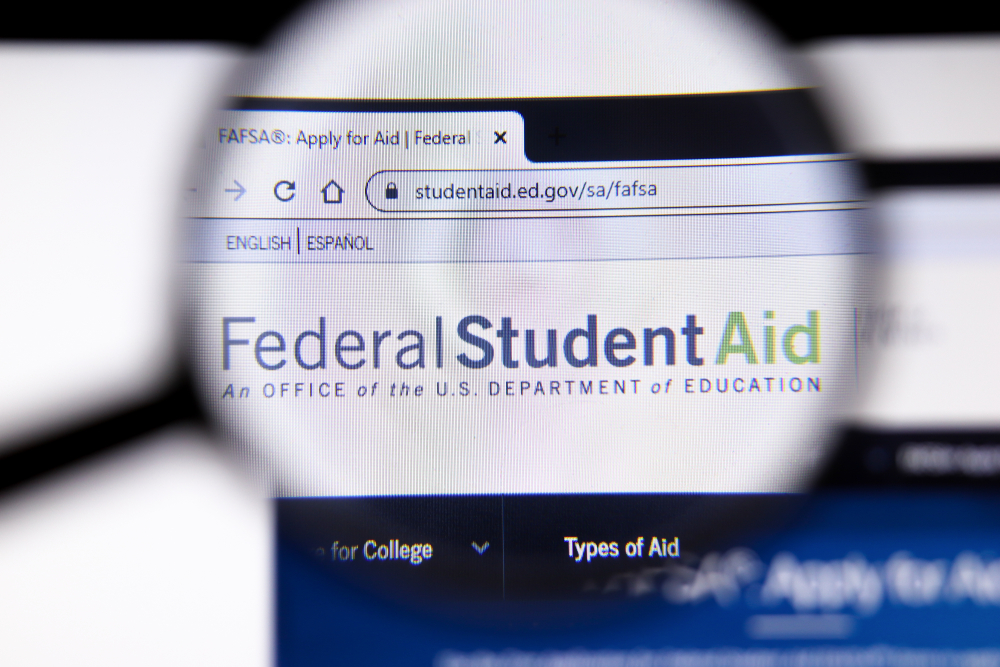Successfully accessing federal student aid often determines whether newcomers can pursue college and career school here in the United States. Staying up to date on the latest federal student aid policies plays a critical role in newcomer service providers’ ability to support and advocate for clients during the application process. This blog covers key updates to the Free Application for Federal Student Aid (FAFSA), potential impacts, and additional resources for both service providers and clients.
What brought about these changes?
The FAFSA Simplification Act, passed by Congress in 2020, is the culmination of years of activism by students and college access and financial aid professionals. The act charged the U.S. Department of Education with a series of requirements, seeking to streamline the application process and increase access to federal student aid. Over the past three years, the U.S. Department of Education has been implementing the act’s various components, including:
- eliminating eligibility restrictions related to Selective Service registration and drug convictions,
- updating the statutory definition of cost of attendance,
- reinstating Pell Grant eligibility for confined or incarcerated individuals, and
- allowing financial aid administrators greater discretion to make adjustments for students with special or unusual circumstances.
Updates to the application process and underlying award formula mark the U.S. Department of Education’s final steps in responding to the act’s requirements.
So, what’s new for the upcoming cycle?
The U.S. Department of Education is set to launch its new version of the FAFSA for the upcoming 2024–2025 school year. We can expect the following changes:
A Simplified Application Experience
While it is still being finalized, the application has been shortened, and its language has been simplified. Some questions were combined, while others only applicable to a small percentage of students were removed. Additional questions and categories have been added about the applicant’s gender, race, and ethnicity. The U.S. Department of Education estimates that it will take approximately one hour to complete the form, given that the required information is readily available.
Accommodations for Unusual Circumstances
In determining dependency, all applicants will now be asked if “unusual circumstances” prevent them from contacting their parents. The sample list of circumstances (see pg. 26) contains several that may be relevant to newcomers, including:
- “left home due to an abusive or threatening environment,”
- “been abandoned by or estranged from their parents, and have not been adopted,”
- “been granted refugee or asylee status and are separated from their parent, or their parents are displaced in a foreign country,” and
- “been a victim of human trafficking.”
If the applicant is considered dependent (generally speaking, under the age of 24 or not independent by one of the other qualifying criteria) and fits one of these scenarios, they will be granted provisional independent status (see pg. 245) at the time of application submission, and a financial aid administrator will follow up with them for appropriate documentation. (See also Accessing Federal Student Aid for Refugee Youth and Adults: Resources and Tips for Successful Application Processing.)
Language Access
Early reports suggested that the new FAFSA form would be available in the 11 most common languages spoken by students classified as English language learners in the United States. Unfortunately, this has been retracted. Instead, Federal Student Aid will provide translation assistance in those 11 most commonly spoken languages as an alternative. Those languages are Arabic, Chinese (Cantonese), Chinese (Mandarin), French, French Creole, German, Korean, Russian, Spanish, Tagalog, and Vietnamese. The FAFSA form itself will remain available in English and Spanish only.
Contributors to the FAFSA Form
Moving forward, a contributor will refer to anyone (the applicant, the applicant’s spouse, a biological or adoptive parent, or the parent’s spouse/applicant’s step-parent) who is required to provide information on the FAFSA form. Who is considered a contributor depends on an applicant’s dependency, tax filing status, and marital status. To learn more, check out this infographic or this video from Federal Student Aid.
FSA IDs
All contributors are required to make an FSA ID (see pg. 5), which requires multi-factor authentication. Parents without a Social Security number (SSN) are now able to create an FSA ID (made possible by a new matching process) and submit applications electronically.
Federal Tax Information
In the past, applicants and their parents (if applicable) were given the option to use the data retrieval tool (DRT) to import tax information from the Internal Revenue Service (IRS). Now, all contributors will be required to provide consent for their relevant tax information to be directly transferred to the U.S. Department of Education. (See here and here.) If consent is not provided, the applicant will not be eligible for federal student aid. Particularly relevant for newcomer service providers to note, contributors will no longer be required to enter their adjusted gross income (AGI), as this information will be included in the data transfer. This means that most applicants will no longer need a copy of their own or their parents’ tax return to complete the application.
TIP: Even if an applicant is newly arrived and/or has not filed taxes in the United States, they will still be required to provide consent so their filing status can be verified.
New Terminology
The Student Aid Report (SAR) provided to students after submitting the application will now be called the FAFSA Submission Summary. Expected Family Contribution (EFC) will now be referred to as the Student Aid Index (SAI) and will continue to be used for determining student aid eligibility.
How will the new formula impact awards?
Not only are there significant updates to the application process itself, but what is considered in the underlying award formula has also been changed. Information provided in the FAFSA form is used to calculate what type and how much student aid an applicant will receive. Grants, such as the Federal Pell Grant and Federal Supplemental Education Opportunity Grant (FSEOG), provide funding to applicants who display exceptional financial need and have not yet earned a bachelor’s, graduate, or other professional degree.
In line with the intentions of the FAFSA Simplification Act, overall more applicants will be eligible to receive the Pell Grant under the new award formula and eligibility requirements. Further, thanks to an increase in the income cutoff, more applicants will qualify for the maximum Pell Grant. Some applicants may now also be eligible for the maximum Pell Grant through a new method based on the applicant’s and their parents’ (if applicable) AGI, their family size, and the poverty guidelines published by Health and Human Services.
That said, independent analysis by the Brookings Institute found that a key provision removing the discount when multiple family members are enrolled in college may decrease a student’s Pell Grant award and institutional grant eligibility, depending on their parents’ income level and number of family members in college. Keep this in mind as you are advising students currently receiving funding, as their Pell Grant award may look different next year.
FYI: The maximum Federal Pell Grant increased from $6,895 in 2022–2023 to $7,395 for the current 2023–24 school year. The maximum Federal Pell Grant for 2024–2025 has yet to be announced.
Is the application available now?
Not yet! Typically, the FAFSA launches each year on October 1st for the subsequent award year. Due to the extent of the changes required, the U.S. Department of Education has delayed the application launch until December for this year only. Future application cycles will return to the October 1st launch date.
You can sign up to receive updates on the application launch here.
What other resources are available?
The U.S. Department of Education will be releasing a variety of resources to support the transition to the new application. The latest updates can be found on their website and YouTube channel:
- What is FAFSA?
- What’s Changed for the 2024–25 FAFSA® Form?
- Who Is a Contributor on the 2024–25 FAFSA® Form?
In addition, the Federal Student Aid Information Center (FSAIC) helpline is available Monday through Friday to answer application- and aid-related questions: 1-800-433-3243. Information on the FSAIC live chat and email options can be found here.
For guidance specific to newcomers, refer to existing Switchboard resources on navigating the application process:
- Toolkit: Accessing Federal Student Aid for Refugee Youth and Adults: Resources and Tips for Successful Application Processing
- Archived Webinar: The Golden Ticket: Accessing Financial Aid for Refugee Youth and Adults
- Archived Webinar: Accessing Federal Student Aid for Newcomer Youth and Adults: The Latest Guidance from the U.S. Department of Education
- Blog Post: Can Afghan Newcomers Access Title IV, Federal Student Aid? Answering FAQ’s About New Guidance from the U.S. Department of Education
Additional resources are available here:
- Federal Student Aid FAFSA Updates webpage
- NASFAA’s FAFSA Simplification Web Center
- Presidents’ Alliance on Higher Education and Immigration










